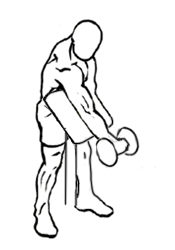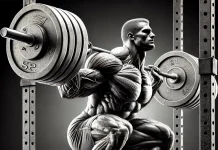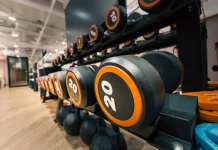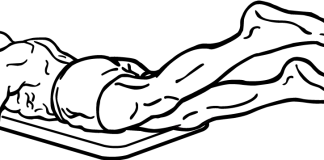Last Updated on September 30, 2022
When it comes to building massive biceps, curls are the go-to exercise for most gym-goers. From hammer curls to concentration curls, the options are endless. But if you’ve already mastered the basics and are looking to take your arm workouts to the next level, it’s time to introduce the Zottman Preacher Curl into your routine.
The Zottman Preacher Curl is a highly effective yet often overlooked exercise. Combining the strengths of a standard preacher curl with a reverse curl, this move targets both the biceps brachii and the brachioradialis, offering you a well-rounded arm workout. While it might sound complex, the Zottman Preacher Curl is straightforward when broken down step by step. Below, we’ll explore everything you need to know about this exercise, including how to perform it correctly, the muscles it targets, and why it should be a staple in your arm day routine.
Why Choose the Zottman Preacher Curl?
The Zottman Curl is unique because it combines two types of curls into one fluid movement. On the way up, it functions like a traditional curl, targeting the biceps, and on the way down, it mimics a reverse curl, engaging the forearms. This dual-action allows you to maximize muscle activation, especially when using the preacher curl bench for added support.
The preacher bench stabilizes your upper body, eliminating the temptation to use momentum, which can happen in standing curls. This creates a more isolated environment for your arms to work, ensuring that your biceps and forearms are the primary muscles doing the lifting.
Benefits of the Zottman Preacher Curl
- Biceps and Forearms Activation: The Zottman Preacher Curl specifically targets the long head of the biceps on the way up and the brachioradialis (the muscle on the top of your forearm) on the way down. By engaging these two muscle groups, you develop stronger, more defined arms.
- Isolation of the Biceps: Because you’re sitting and using a preacher curl bench, this exercise isolates the biceps, removing the risk of using other muscles to help lift the weight. This isolation leads to better strength gains and hypertrophy in the biceps.
- Improved Grip Strength: The reverse curl portion of the exercise helps strengthen the muscles in your forearm and hand, improving your grip strength. This can carry over to other exercises, like deadlifts or pull-ups, where grip strength is crucial.
- Reduces Cheating: The preacher curl bench helps reduce the likelihood of cheating by preventing the use of momentum or body swing to lift the weights. This makes the exercise more effective and safer, reducing the risk of injury.
- Advanced Variation: If you’re bored of regular curls or have hit a plateau, the Zottman Preacher Curl provides a fresh challenge. Because it works both the biceps and the forearms in different phases of the movement, it introduces a new stimulus to your arms, promoting muscle growth.
How to Perform the Zottman Preacher Curl with Dumbbells
Now that you understand the benefits, let’s dive into the correct technique for performing this exercise.
Step-by-Step Instructions
- Set Up the Preacher Curl Bench: Start by adjusting the preacher curl bench so that the pad is snug under your armpits when you sit down. The goal is to keep your upper arms fully supported throughout the exercise. This ensures maximum isolation of the biceps and eliminates any swinging or unnecessary movement.
- Grip the Dumbbells: Once seated, grab a pair of dumbbells with a standard underhand grip (palms facing up). Your hands should be shoulder-width apart or slightly closer. Rest your upper arms against the pad, ensuring your arms are fully extended. Keep your feet firmly planted on the ground for stability.
- Curl the Dumbbells: Begin the movement by curling the dumbbells up, just like you would in a standard preacher curl. Focus on using your biceps to lift the weights rather than swinging or jerking them up. As you curl the dumbbells toward your shoulders, keep your elbows pinned to the pad and avoid using your body to assist in the movement.
- Rotate Your Wrists: Once the dumbbells are near the top of the movement, rotate your wrists so that your palms are now facing down. This is the key part of the Zottman Curl. The wrist rotation transitions the movement from a regular curl into a reverse curl for the negative (lowering) phase.
- Lower the Dumbbells Slowly: With your wrists rotated and your palms facing the floor, slowly lower the dumbbells back to the starting position. This eccentric phase of the exercise targets the brachioradialis and forearm muscles. The slower you go, the more muscle fibers you’ll recruit, leading to better gains.
- Return to the Starting Position: Once your arms are fully extended again, rotate your wrists back to the original palms-up position and repeat the movement. Complete the desired number of reps on one arm before switching to the other, or alternate arms after each rep, depending on your preference.
Common Mistakes to Avoid
As with any exercise, proper form is crucial to avoid injury and maximize gains. Here are some common mistakes to watch out for when performing the Zottman Preacher Curl:
- Using Momentum: One of the most common mistakes people make during curls is using momentum to swing the weights up. This not only reduces the effectiveness of the exercise but also increases the risk of injury. By using a preacher bench, you’re less likely to cheat, but always be mindful to lift and lower the weight with control.
- Neglecting the Wrist Rotation: The wrist rotation is what makes the Zottman Curl so effective for targeting both the biceps and forearms. If you forget to rotate your wrists at the top of the movement, you’ll miss out on the reverse curl benefits. Take your time with the movement to ensure proper technique.
- Going Too Fast: Speed is not your friend when it comes to strength training. A slow and controlled movement, especially during the eccentric (lowering) phase, is essential for maximizing muscle activation. Avoid rushing through the reps just to finish quickly.
- Lifting Too Heavy: It’s tempting to grab the heaviest dumbbells you can handle, but this exercise is all about control and form. Start with a manageable weight, and focus on the quality of your reps rather than the quantity. You can always increase the weight as you get stronger, but starting too heavy can lead to poor form and potential injuries.
- Not Fully Extending the Arms: One of the keys to the Zottman Preacher Curl is fully extending your arms during the lowering phase of the movement. This ensures that you’re working the entire range of motion and not cutting the exercise short. Partial reps might feel easier, but they won’t provide the same muscle-building benefits.
Variations of the Zottman Preacher Curl
Once you’ve mastered the standard Zottman Preacher Curl, you can try a few variations to keep your workouts challenging and engaging:
- Seated Zottman Curl: Instead of using a preacher curl bench, you can perform the Zottman Curl while seated on a regular bench. This eliminates some of the stability provided by the preacher bench, forcing your core to work harder to stabilize your body during the movement. However, it does allow for more freedom of motion, which can be beneficial for more advanced lifters.
- Standing Zottman Curl: If you prefer to perform the exercise while standing, you can still reap the benefits of the Zottman Curl. However, be cautious not to use your legs or lower back to swing the weights up. Focus on keeping your body stationary and using only your arms to lift the dumbbells.
- Cable Zottman Curl: For an added challenge, try using a cable machine to perform the Zottman Curl. The constant tension provided by the cable throughout the movement makes the exercise even more difficult, especially during the eccentric phase. This variation is excellent for promoting time under tension, which is a key factor in muscle growth.
- EZ-Bar Zottman Curl: If you prefer using a barbell or EZ-bar, you can still perform the Zottman Curl. The only difference is that you’ll be working both arms simultaneously rather than one at a time. This can be a great way to add variety to your arm workout, but be sure to keep your form strict and avoid using momentum to lift the bar.
How to Incorporate the Zottman Preacher Curl into Your Workout
Now that you know how to perform the Zottman Preacher Curl, you might be wondering where it fits into your arm day routine. Because this exercise targets both the biceps and forearms, it’s ideal for the middle or end of your workout, after you’ve already performed your primary biceps exercises.
Here’s a sample arm workout that incorporates the Zottman Preacher Curl:
- Barbell Curl: 4 sets of 8-10 reps
- Hammer Curl: 3 sets of 10-12 reps
- Zottman Preacher Curl: 3 sets of 10 reps (slow and controlled)
- Concentration Curl: 3 sets of 12 reps per arm
Alternatively, you can also use the Zottman Preacher Curl as a finisher to fully exhaust your biceps and forearms. Because the reverse curl portion focuses on the eccentric phase, it’s a great way to end your workout on a high note and stimulate muscle growth.
The Zottman Preacher Curl is a powerhouse exercise that should be a regular part of your arm training routine if your goal is bigger, stronger biceps and forearms. Its unique combination of a standard curl and reverse curl maximizes muscle activation, ensuring that you’re hitting all the right areas of your arms.
By following proper form, avoiding common mistakes, and progressively increasing the weight, you’ll soon notice the gains in both your biceps and forearms. So next time you’re looking for a challenging and effective curl variation, give the Zottman Preacher Curl a try—you won’t be disappointed!








